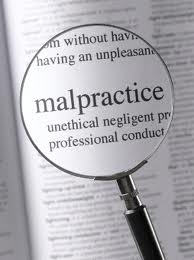Establishing Attorney-Client Privilege Within Your Own Firm – Part 1
Learning some lessons from the recent Hunter Maclean v. St. Simons Waterfront appeal.
How do you protect your internal firm communications from discovery in a legal malpractice case? The answer begins when you first believe that your firm has received a threat of a possible claim. The recent Hunter Maclean opinion provides at least a little clarification after so many different court opinions across the country.
Based upon where this case stands today, here is some background information along with ideas for ways to protect your firm and clients from conflicts of interest. Part 2 will further discuss the recent ruling and explore ways to establish attorney-client privilege (ACP) within your firm.
Attorney-client privilege and internal discussions
The details aren’t as important as the ruling, but the case (Hunter, Maclean, Exley & Dunn v. St. Simons Waterfront, LLC 2012 WL 2866299) is about a developer suing its law firm after condo buyers tried to break out of the developer’s contracts which were prepared by the law firm. At issue was whether Hunter Maclean could claim attorney-client privilege for internal discussions related to the possibility of a malpractice suit against the firm. The trial court ruled that those conversations between lawyers representing the client and the firm’s internal General Counsel were not privileged, but the July 13, 2012 Georgia Court of Appeals ruling held, in part, that there is no automatic conflict of interest.
I like the fact that Judge Dillard rejected the draconian (his word) rule that automatically imputes a conflict when a law firm general counsel (GC) gets involved in an internal discussion regarding possible malpractice claims. When you go to the GC, you don’t necessarily know there’s a problem unless and until you carefully consider the question. That requires discussion, after which a case-by-case decision can be made.
What if you are threatened by a client?
If you’re threatened by a client and are worried that a claim or suit may be inevitable, should you talk to your GC? Here are some ideas to help you argue that internal communications with your GC should not be exposed given the above-mentioned ruling:
- Segregate communication. Use a separate file to create work product protection because it is in anticipation of litigation.
- Hire outside counsel. Given the uncertainty, have capable counsel outside the firm evaluate the threat as a potential malpractice claim.
- Limit GC communication. Focus on the overall situation and recommended course – like hiring outside counsel.
- Report it. Report every incident or claim as defined by your E&O carrier, whether or not you expect litigation, to neutralize allegations that any issue was more serious than others.
After the threat, you of course still have the responsibility to act in your client’s best interest, even though an imputed conflict makes this challenging. You have the ethical duty to:
- Notify the client of the potential conflict.
- Present options for immediate relationship termination (with impact assessment) and/or recommend independent counsel.
- Disclose that the firm will be taking steps to protect itself.
- If the conflict is waivable, and after taking these certain steps, get informed written consent before proceeding.
In Part II, we will look at the authoritative literature utilized by the Court of Appeals, as it provides ways to help separate the client from the conflict.
For those of you with Daily Report subscriptions, you can read about the case here: http://www.dailyreportonline.com/PubArticleDRO.jsp?id=1202564095975&slreturn=20120728101844
The opinion authored by Judge Dillard can be found here:
http://pdfserver.amlaw.com/dailyreport/Editorial/PDF/HUNTERMACLEANEXLEYDUNN.pdf


